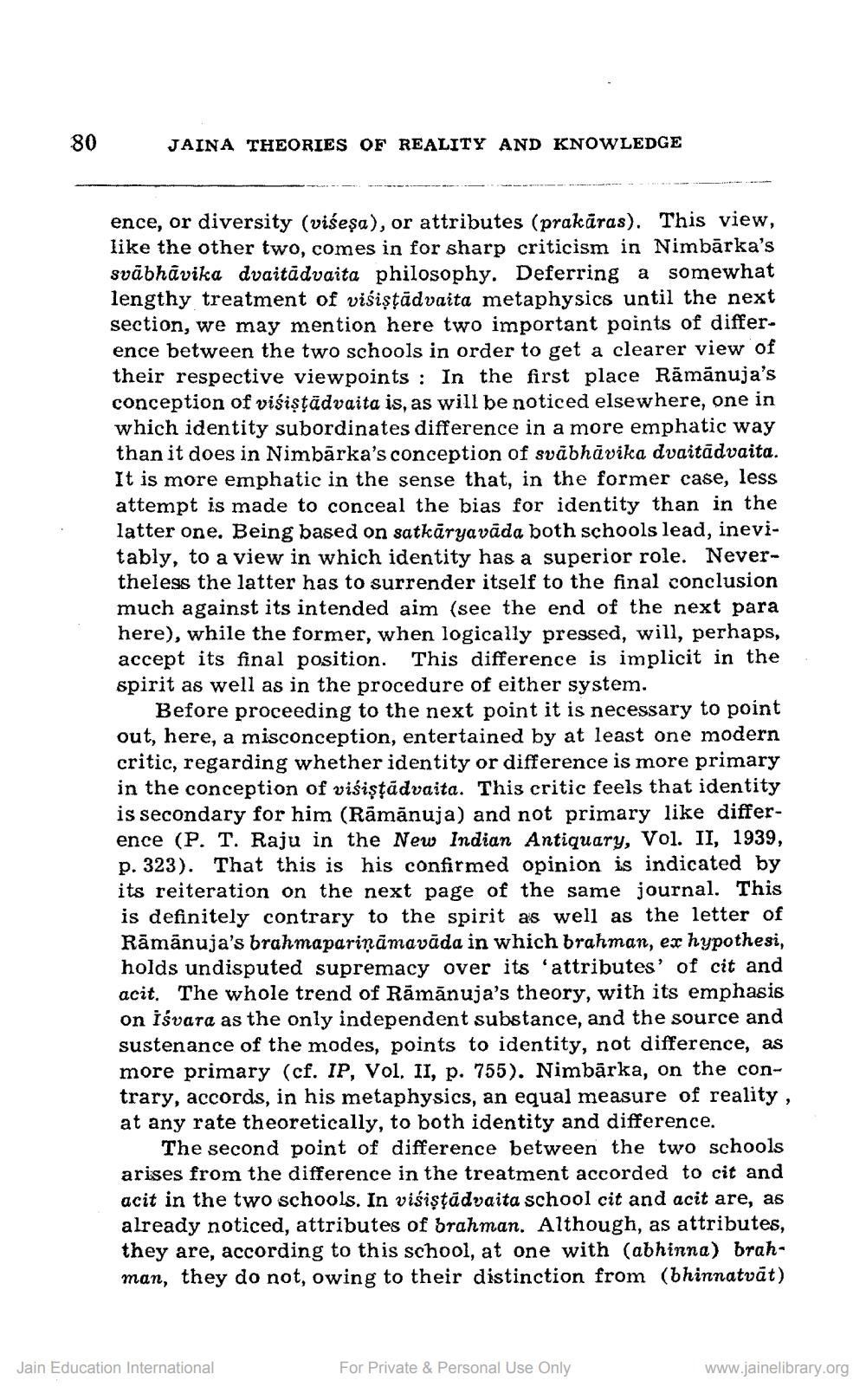________________
80
JAINA THEORIES OF REALITY AND KNOWLEDGE
ence, or diversity (viseşa), or attributes (prakaras). This view, like the other two, comes in for sharp criticism in Nimbārka's svābhāvika dvaitadvaita philosophy. Deferring a somewhat lengthy treatment of visiṣṭādvaita metaphysics until the next section, we may mention here two important points of difference between the two schools in order to get a clearer view of their respective viewpoints: In the first place Rāmānuja's conception of visiṣṭādvaita is, as will be noticed elsewhere, one in which identity subordinates difference in a more emphatic way than it does in Nimbarka's conception of svabhävika dvaitadvaita. It is more emphatic in the sense that, in the former case, less attempt is made to conceal the bias for identity than in the latter one. Being based on satkāryavāda both schools lead, inevitably, to a view in which identity has a superior role. Nevertheless the latter has to surrender itself to the final conclusion much against its intended aim (see the end of the next para here), while the former, when logically pressed, will, perhaps, accept its final position. This difference is implicit in the spirit as well as in the procedure of either system.
Before proceeding to the next point it is necessary to point out, here, a misconception, entertained by at least one modern critic, regarding whether identity or difference is more primary in the conception of visiṣṭādvaita. This critic feels that identity is secondary for him (Ramanuja) and not primary like difference (P. T. Raju in the New Indian Antiquary, Vol. II, 1939, p. 323). That this is his confirmed opinion is indicated by its reiteration on the next page of the same journal. This is definitely contrary to the spirit as well as the letter of Rāmānuja's brahmapariņāmavāda in which brahman, ex hypothesi, holds undisputed supremacy over its 'attributes' of cit and acit. The whole trend of Ramanuja's theory, with its emphasis on Isvara as the only independent substance, and the source and sustenance of the modes, points to identity, not difference, as more primary (cf. IP, Vol. II, p. 755). Nimbarka, on the contrary, accords, in his metaphysics, an equal measure of reality, at any rate theoretically, to both identity and difference.
The second point of difference between the two schools arises from the difference in the treatment accorded to cit and acit in the two schools. In visiṣṭādvaita school cit and acit are, as already noticed, attributes of brahman. Although, as attributes, they are, according to this school, at one with (abhinna) brahman, they do not, owing to their distinction from (bhinnatvät)
Jain Education International
For Private & Personal Use Only
www.jainelibrary.org




